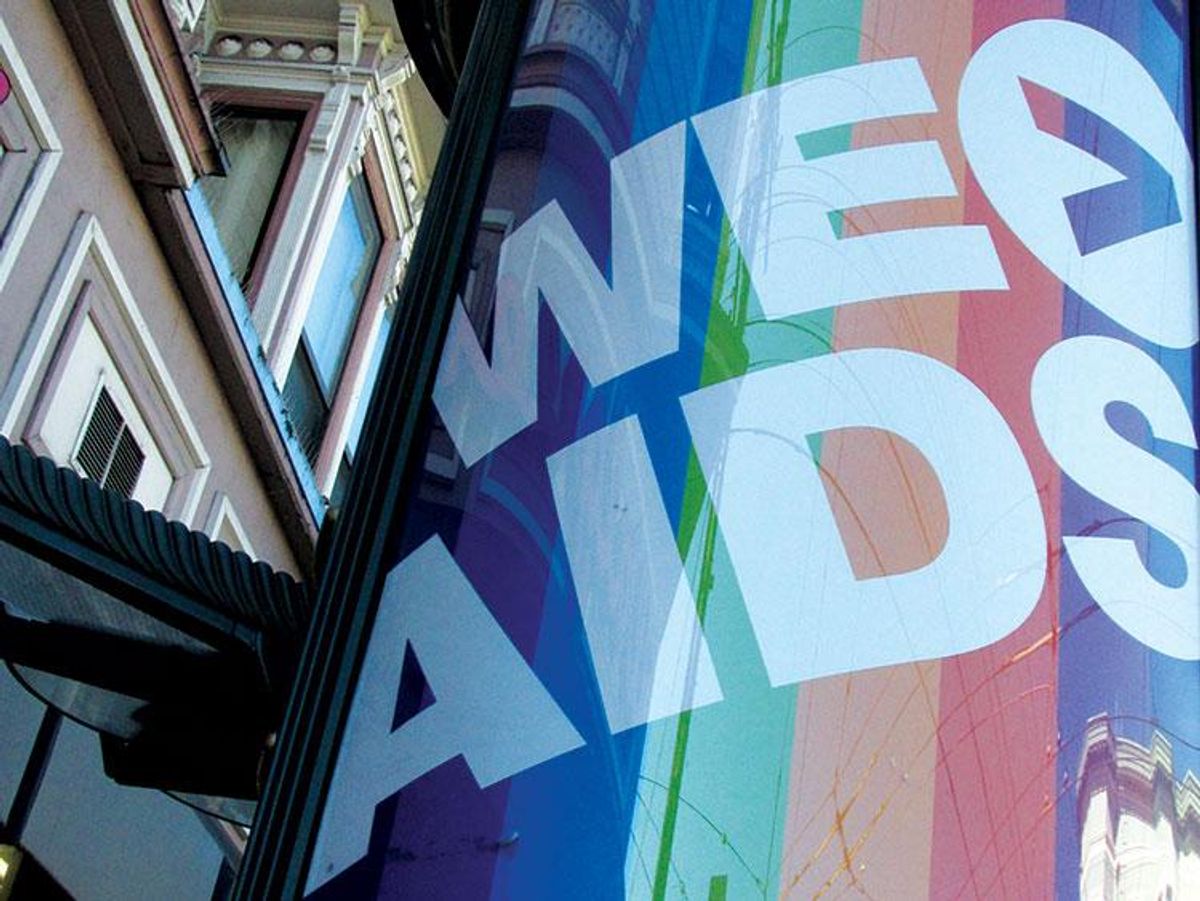By now, many have heard about San Francisco’s public health miracle — a dramatic reduction in new HIV infections that put the county on track for reducing HIV transmission and AIDS-related deaths in San Francisco by 90 percent before 2020. Indeed, the county and city of San Francisco (which are one and the same) saw new HIV infections fall 34 percent between 2012 and 2014, and an additional 17 percent between 2014 and 2015. The city that was once ground zero for HIV is down to only 255 new transmissions a year.
While advocates nationwide are looking to San Francisco’s success to see if it can be replicated, you don’t have to go far for the answer. Plus compared how three California counties were fairing in their prevention efforts, whether they could emulate San Francisco’s model, and whether doing so would produce similar results. What we discovered were a series of hurdles that are barriers to successfully exporting the San Francisco method, even within the same seemingly resource-rich state.
First, San Francisco—a city which occupies the exact same borders as the county it’s in — is uniquely situated when it comes to battling HIV and AIDS. San Francisco has always been a leader in HIV treatment. The first place in the world to begin treatment upon diagnosis, its RAPID Antiretroviral Program Initiative for New Diagnoses is now trying to reduce the time between a positive HIV test and the start of treatment down to 24 hours or less.
San Francisco’s history as an LGBT Mecca meant that many residents became ill at the outset of the epidemic, but it also meant services, activists, community organizations, and fundraising efforts sprang up quickly in response. That large gay voting block also made dealing with HIV a necessity for local politicians.
Thirty-five years into the epidemic, San Francisco has the funding, political will, public education, empowered stakeholders, and a cultural liberalism (willingness to openly discuss sex, distribute condoms to teens, etc.) that few counties in America can rival. It also benefits from being a small, predominately white, and relatively affluent county, which made it possible for them to find other resources when California’s legislature cut the state’s Office of AIDS budget in half, completely eliminating all state-sponsored HIV prevention efforts. That was an $80 million cut to state HIV resources, one that many counties simply could not overcome.

San Francisco City Hall awash in rainbow colors for Pride 2016
For all of San Francisco’s successes, local leaders acknowledge they haven’t been meeting their goals when it comes to lowering HIV rates for African-Americans, Latinos, and transgender people. Only 67 percent of newly diagnosed African-Americans are in care within a month (vs. 84 percent of the general population), and only 65 percent had undetectable levels within a year (vs. 72 percent overall). Susan Philips, of San Francisco’s Project PriDE, says they are trying to address those health inequities and “PrEP is one way of doing that.” (See our sidebar for more innovative California efforts.)
Other counties, both in California and nationwide, simply don’t have San Francisco’s unique demographics or resources and therein lies the problem with replicating their results. A relatively small city, San Francisco has a population of only 837,442.
By comparison, Los Angeles County is a sprawling 4,084 square miles with 10 million people, and Fresno County is even larger, though its 6,011 square miles are mostly farm lands. Located in the fertile central valley, Fresno is the nation’s top agricultural producing county, and is home to 955,272 people, half of whom are Latino. Twenty-two percent of Fresno’s population are immigrants and, according to the University of Southern California Center for the Study of Immigrant Integration, 37 percent of the county’s Latino immigrant adults are without documentation, making them even more vulnerable to lower wages, labor abuses, and other causes of “social instability.”
In 2011, Fresno County’s new cases of HIV spiked 73 percent over the previous five-year average. For nearly a decade, the county has also been struggling with an explosion of injection drug use under conditions much like those that sparked the rural HIV outbreak in Indiana. Injection drugs users are at an especially high risk for getting HIV, but often have difficulty accessing services that prevent HIV, such as mental health care, PrEP, and clean needles. Despite California’s needle exchange law, users report and studies show access remains extremely limited.
When the California Office of AIDS budget was disemboweled, Jena Adams, head of the HIV/AIDS team at the Fresno County Department of Public Health, says Fresno lost much of its funding for HIV testing and prevention. Efforts in those areas were already stymied by the rural nature of the county, says Adams, where few workers can take off time without losing income. Public transportation from farms and orchards to cities with HIV resources are also limited.
“Which may mean only one bus in the morning and then one bus later in the afternoon,” Adams explains. That’s a full day’s worth of work lost; which can mean a significant loss of wages, daycare, or even a person’s job.

Gay Pride 2016, San Francisco (Flickr/Alshan)
For years, Fresno struggled with the fact that many of those who came in for testing didn’t return for the results. Now they’ve started doing rapid tests, where clients can learn immediately if they are negative or positive. But the next step isn’t always as easy.
“In Fresno County, it’s a challenge for [those who test negative] to get PrEP,” Adams acknowledges. “Especially for young people, who are not working full time, don’t have insurance, in rural areas where transportation is a problem.”
And when the HIV test is positive, there’s no RAPID response-style team to get folks connected with care. The spread out, rural nature of Fresno County also inhibits connecting clients with care quickly and many of Fresno’s population have difficulty accessing medical care due to language, insurance, and financial bar riers (and a culture of seeking medical intervention only for acute needs, rather than preventative care).
All that adds up to, as of 2013, a full 27 percent of all new HIV cases being simultaneously diagnosed with HIV and AIDS. Another 9 percent were diagnosed with AIDS soon afterwards. That means more than 1 in 3 (36 percent) people with HIV in Fresno weren’t diagnosed until after the disease had already progressed, irreparably damaging that person’s immune system, and making it far more difficult for them to achieve viral suppression.
Like Fresno, Los Angeles County is fighting an entirely different epidemic — and needs to use a different approach. While Adams says she can’t recall “the last time I’ve been made aware of a new transgender positive” in Fresno, Los Angeles has over 600 transgender people living with HIV, most of them women of color,
Two of the core elements to the San Francisco “miracle” model are Treatment as Prevention — getting those with HIV on treatment upon diagnosis, and reducing their viral load to a point where they can no longer transmit HIV to their partners — and increasing access to PrEP, the HIV prevention treatment in the form of a once-daily pill that’s nearly 100 percent effective when taken as prescribed. Fresno is still far from seeing the benefits of either PrEP or TasP and Los Angeles just began rolling out its first PrEP program this summer (leading the Los Angeles Times to quip, “Until this week, Los Angeles County hadn’t begun to spread the word and distribute the medicine despite being the second-largest epicenter of HIV and AIDS in the country”).
Jeff Sheehy, who serves on San Francisco’s Getting to Zero consortium and is director for communications at University of California San Francisco AIDS Research Institute, thinks adopting San Francisco’s model elsewhere is doable.
“Introducing PrEP into a healthcare system? With Obamacare that’s possible,” he says. “And certainly in California, where Medicaid covers PrEP, it’s possible to deliver PrEP widely across a number of populations. A network of sexual health clinics can be developed within communities, especially communities that have had trouble accessing healthcare on a regular basis.”
In addition to money, and a well-thought-out, community-created blueprint for prevention, Sheehy believes another element is essential for jurisdictions to duplicate San Francisco’s prevention and treatment models: “You need the political will to deploy them.”
In 2004, and long before PrEP, the RAND corporation and the Centers for Disease Control and Prevention teamed up to help organizations and health departments estimate the relative cost- effectiveness of various HIV prevention strategies. They determined that exporting a successful prevention strategy from one location to another is actually quite difficult. “Something that works for gay men in New York may not be feasible in a more politically conservative city.” What works for 100 people may not work for 1,000 people.
The group’s report admitted that, “programs found to be cost-effective in controlled intervention trials often prove to be less effective when replicated on a larger scale or targeted to a different audience.”
This sums up the real potential that — even if a county is able to devote the same resources to the cause and adopt San Francisco’s method wholesale — it simply may not work. Replicating their method in different environments, with different demographics, and different barriers to care, may still be effective, but it may not be as effective as some other intervention.
Because of their 35 years in this fight, San Francisco now has the infrastructure in place to have a real chance at ending this epidemic. It’s likely that infrastructure is even more difficult to replicate than a pro-PrEP philosophy, a testing culture, patient-focused rapid medical care, the political will, and, of course, the funding to pay for it all.
This article was supported by University of Southern California’s Annenberg School of Journalism and produced as part of the California Health Data Journalism Fellowship. A longer version of this piece appears online at https://bit.ly/XprtngSFMethd.















































































